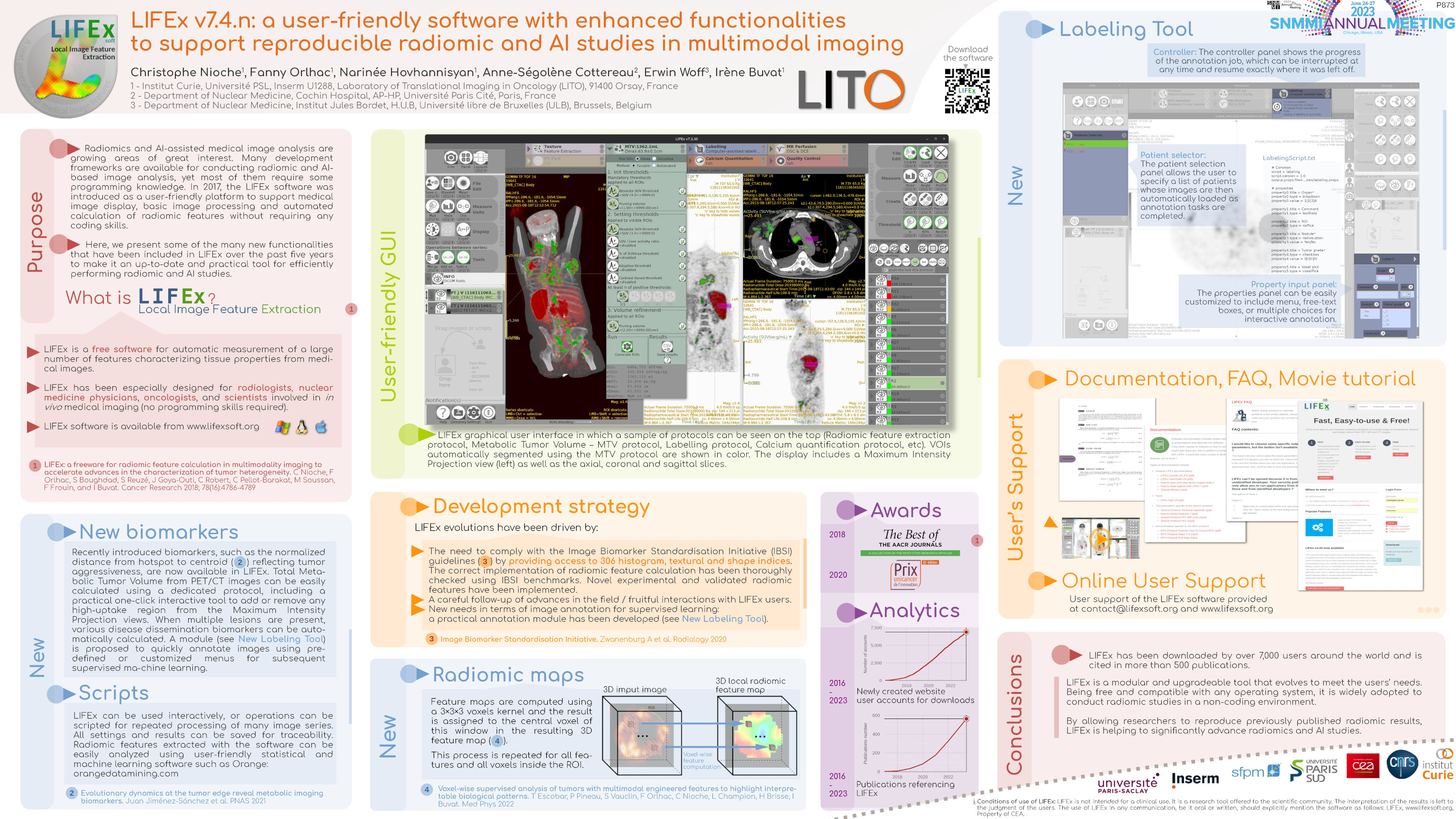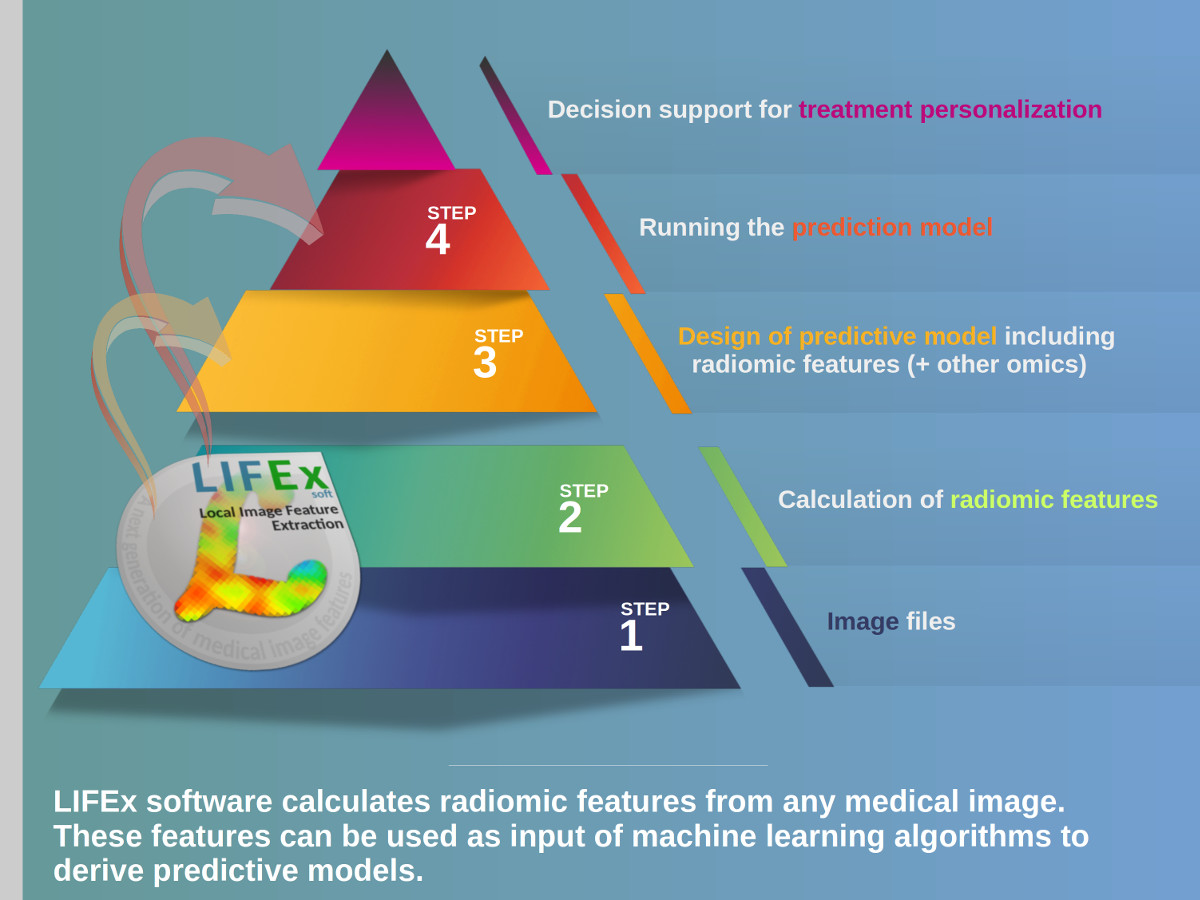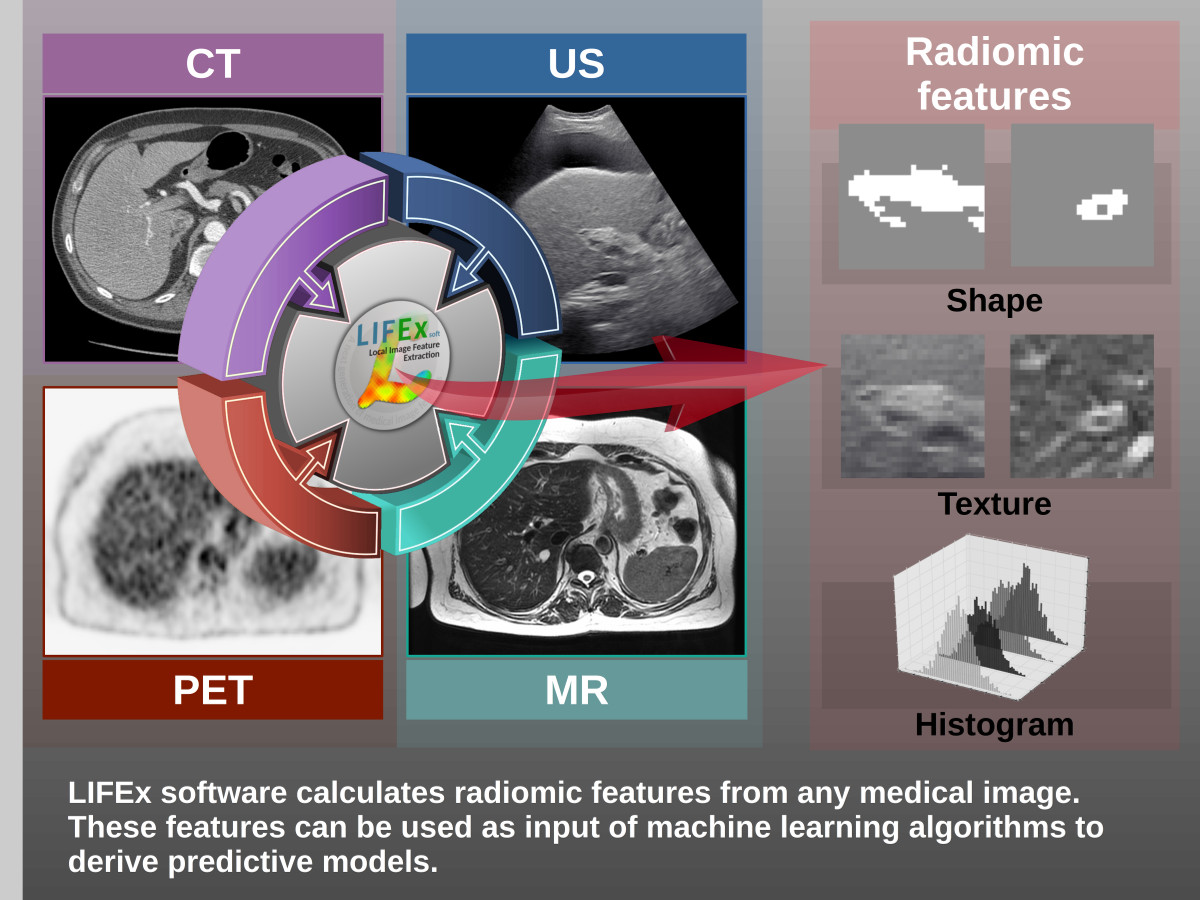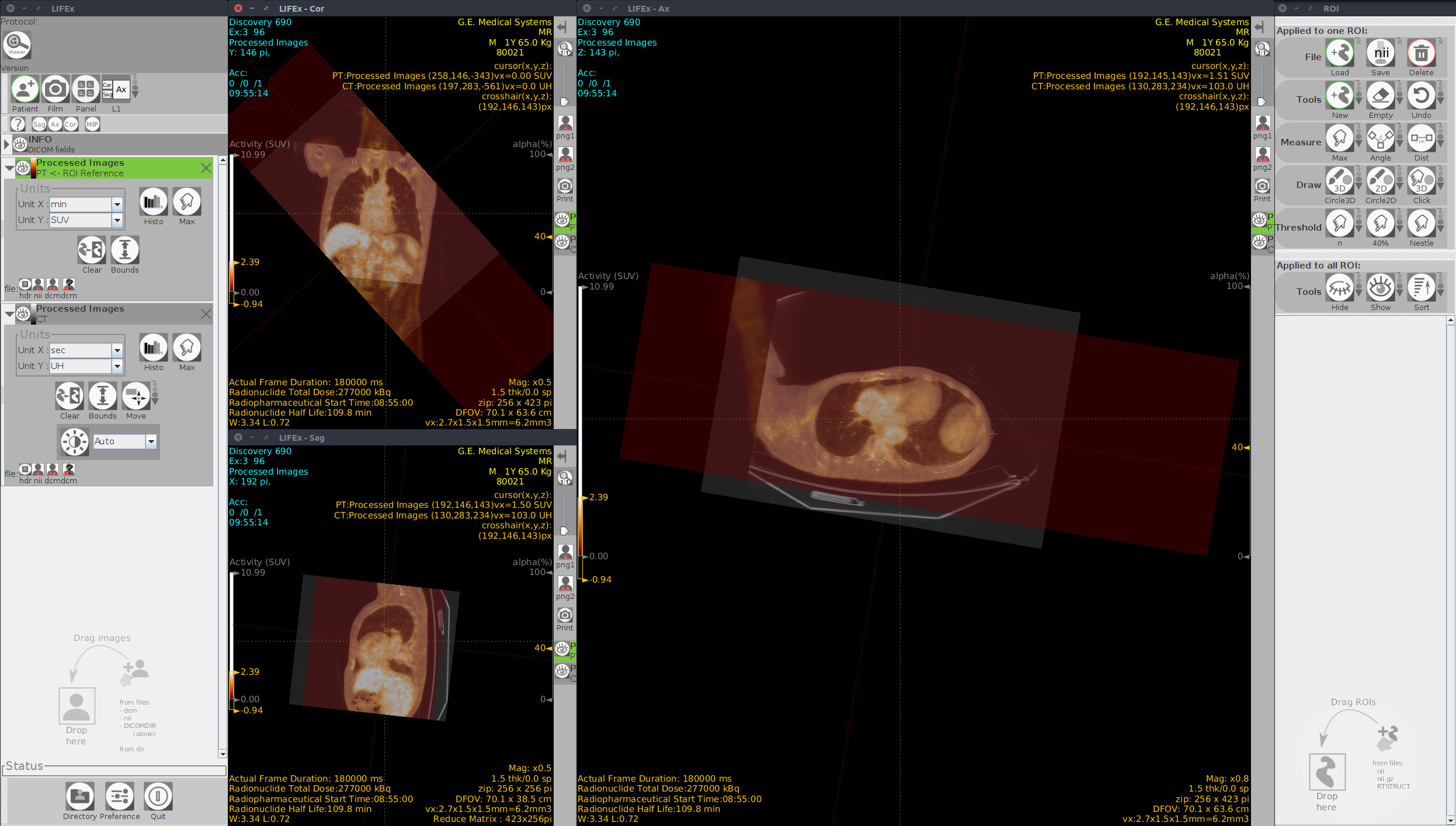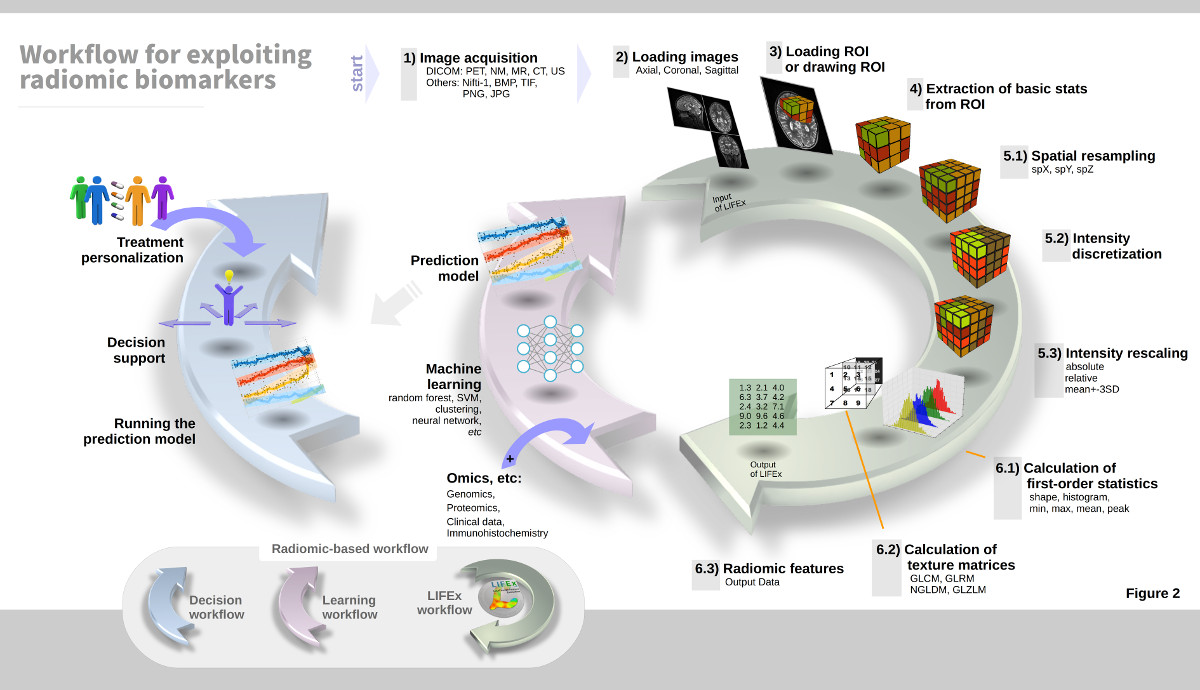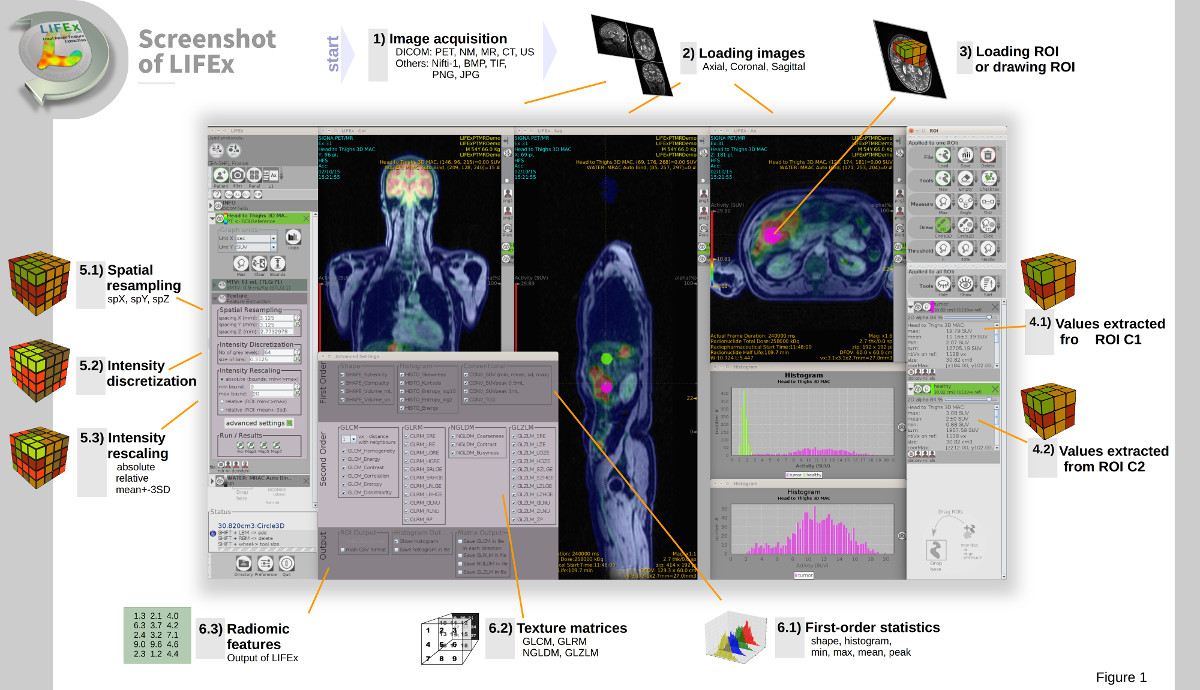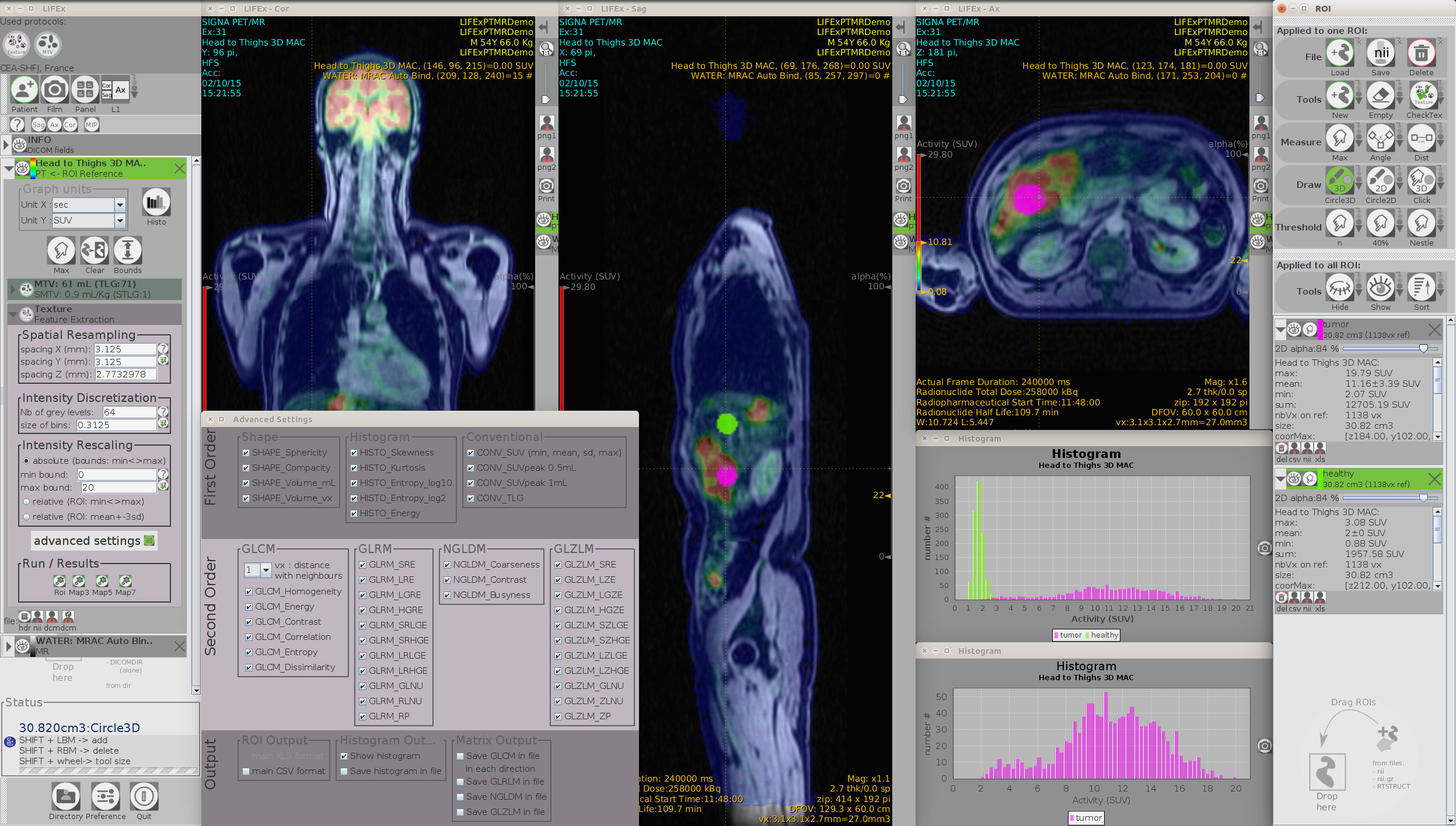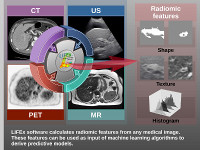LIFEx: a freeware for radiomic feature calculation in multimodality imaging to accelerate advances in the characterization of tumor heterogeneity
C Nioche, F Orlhac, S Boughdad, S Reuzé, J Goya-Outi, C Robert, C Pellot-Barakat, M Soussan, F Frouin, and I Buvat. LIFEx: a freeware for radiomic feature calculation in multimodality imaging to accelerate advances in the characterization of tumor heterogeneity. Cancer Research 2018; 78(16):4786-4789
Abstract
Textural and shape analysis is gaining considerable interest in medical imaging, particularly to identify parameters characterizing tumor heterogeneity and to feed radiomic models. Here we present a free, multiplatform, and easy-to-use freeware called LIFEx, which enables the calculation of conventional, histogram-based textural and shape features from PET, SPECT, MR, CT, and US images, or from any combination of imaging modalities. The application does not require any programming skills and was developed for medical imaging professionals. The goal is that independent and multicenter evidence of the usefulness and limitations of radiomic features for characterization of tumor heterogeneity and subsequent patient management can be gathered. Many options are offered for interactive textural index calculation and for increasing the reproducibility among centers. The software already benefits from a large user community (more than 800 registered users), and interactions within that community are part of the development strategy.

